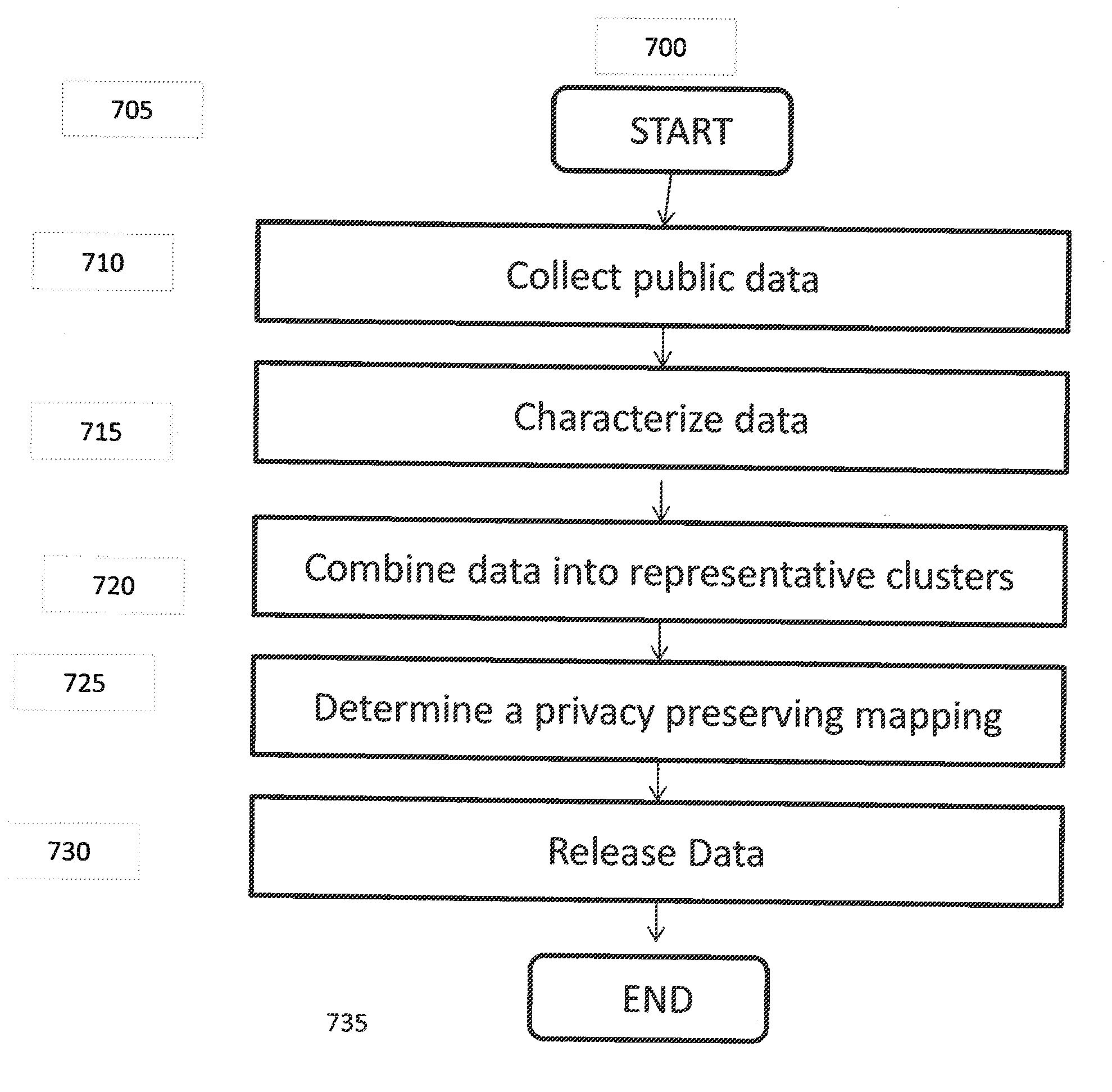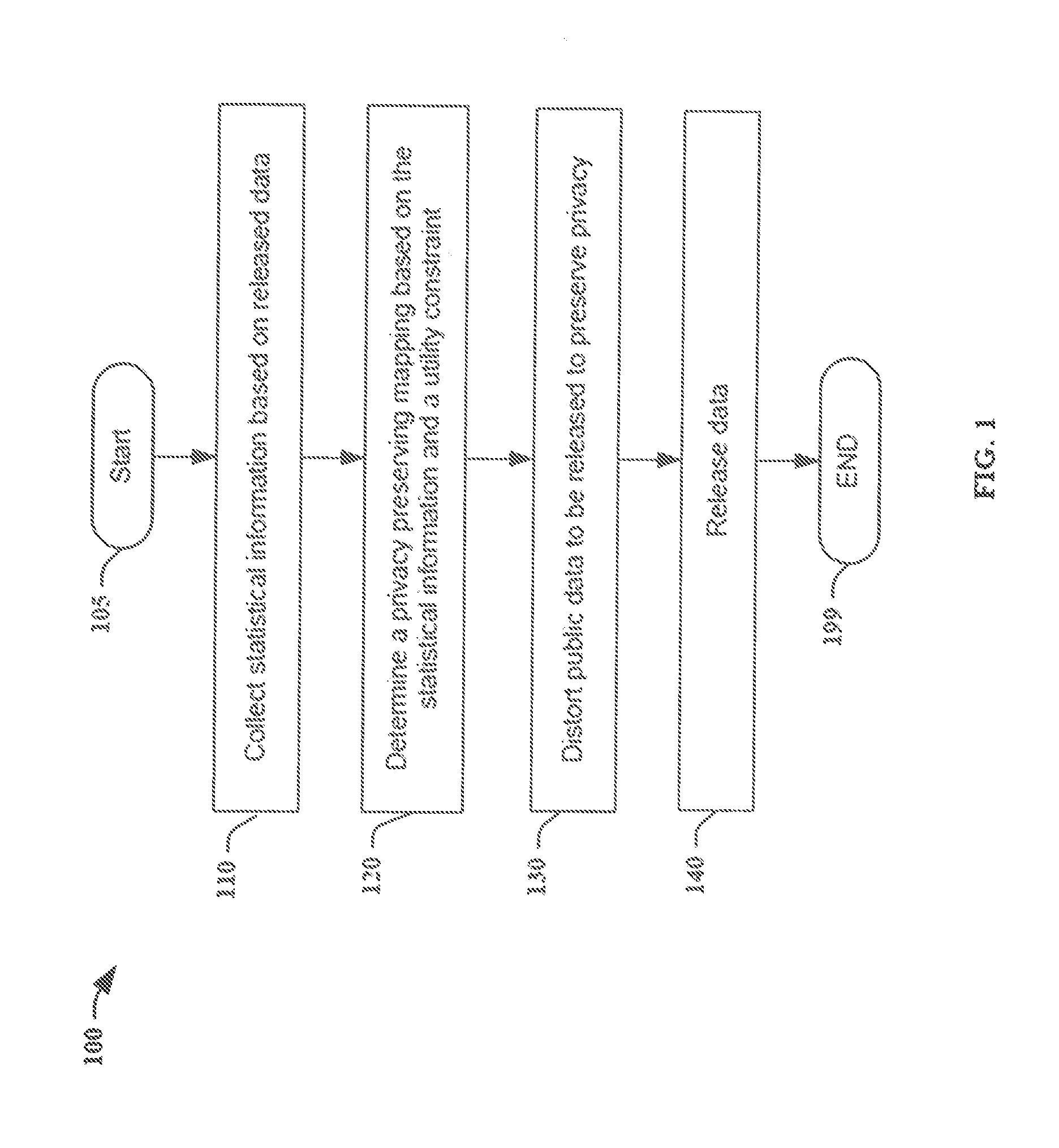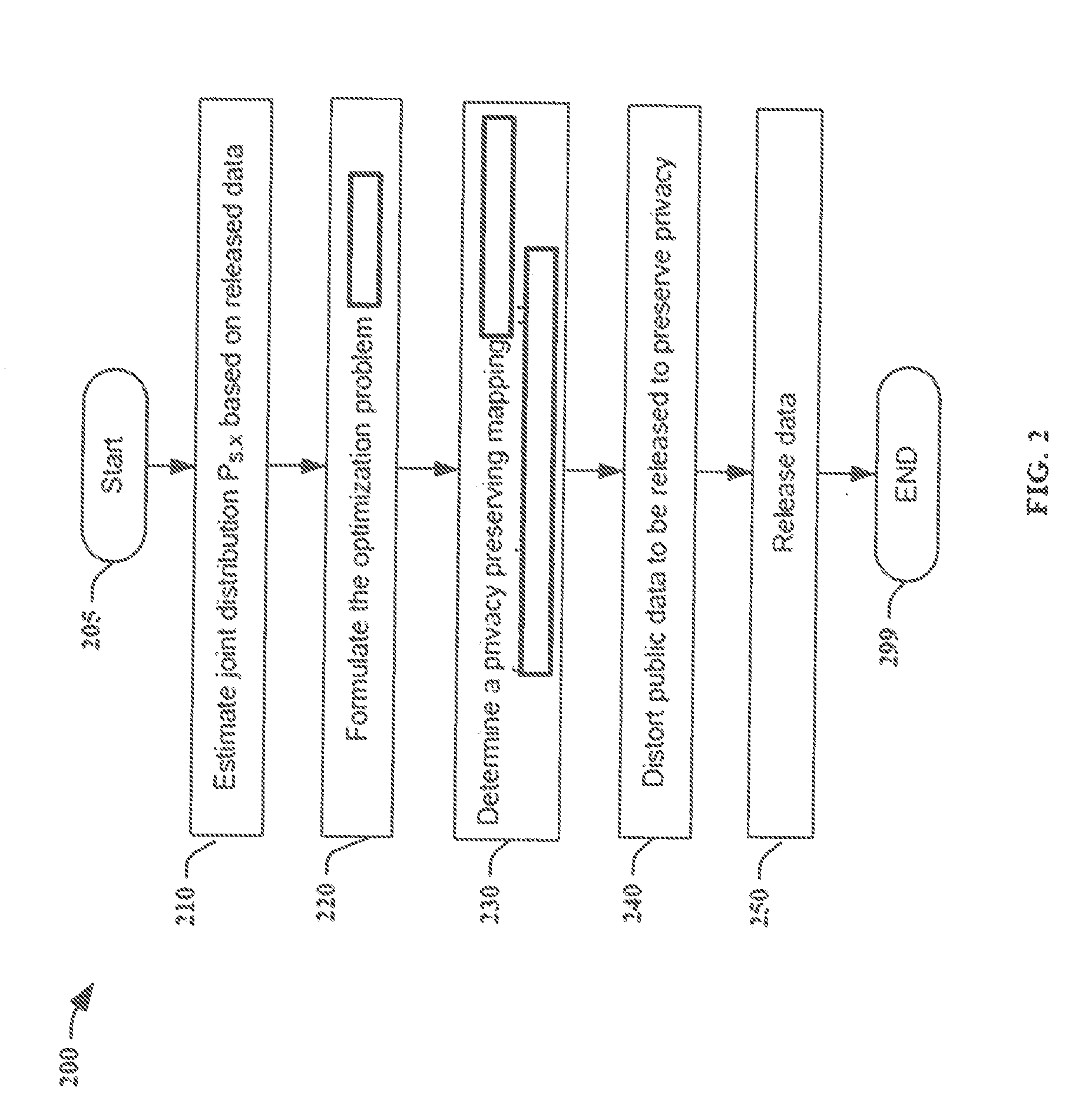Privacy against inference attacks under mismatched prior
a technology of inference and privacy, applied in probabilistic networks, instruments, television systems, etc., can solve problems such as inference of more sensitive information, many dangers of online privacy abuse, and privacy risks
- Summary
- Abstract
- Description
- Claims
- Application Information
AI Technical Summary
Benefits of technology
Problems solved by technology
Method used
Image
Examples
Embodiment Construction
[0022]Referring now to the drawings, and more particularly to FIG. 1, a diagram of an exemplary method 100 for implementing the present invention is shown.
[0023]FIG. 1 illustrates an exemplary method 100 for distorting public data to be released in order to preserve privacy according to the present principles. Method 100 starts at 105. At step 110, it collects statistical information based on released data, for example, from the users who are not concerned about privacy of their public data or private data. We denote these users as “public users,” and denote the users who wish to distort public data to be released as “private users.”
[0024]The statistics may be collected by crawling the web, accessing different databases, or may be provided by a data aggregator. Which statistical information can be gathered depends on what the public users release. For example, if the public users release both private data and public data, an estimate of the joint distribution PS,X can be obtained. I...
PUM
 Login to View More
Login to View More Abstract
Description
Claims
Application Information
 Login to View More
Login to View More - R&D
- Intellectual Property
- Life Sciences
- Materials
- Tech Scout
- Unparalleled Data Quality
- Higher Quality Content
- 60% Fewer Hallucinations
Browse by: Latest US Patents, China's latest patents, Technical Efficacy Thesaurus, Application Domain, Technology Topic, Popular Technical Reports.
© 2025 PatSnap. All rights reserved.Legal|Privacy policy|Modern Slavery Act Transparency Statement|Sitemap|About US| Contact US: help@patsnap.com



